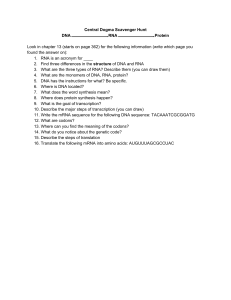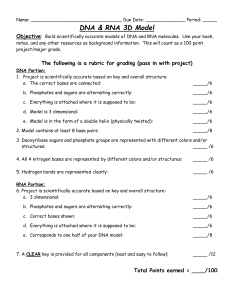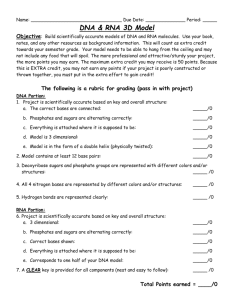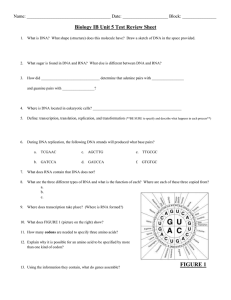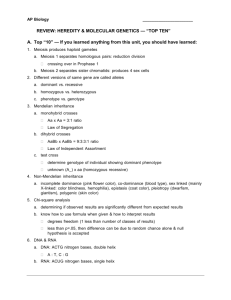RNA+and+Gene+Expression+Section+3+Definitions+
advertisement
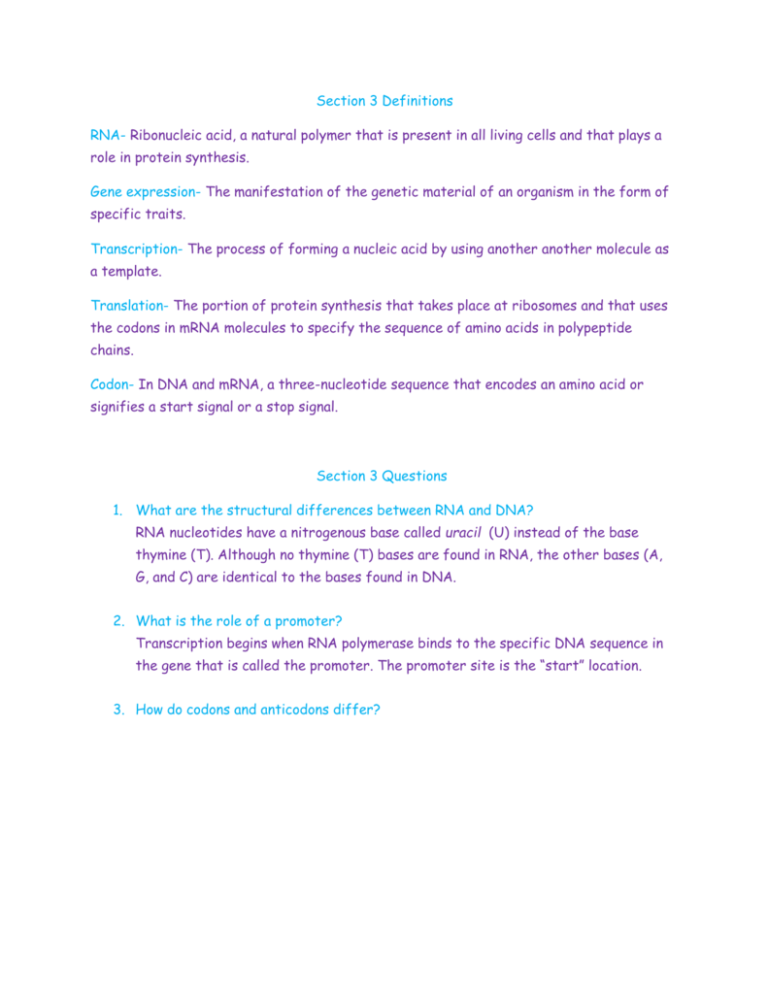
Section 3 Definitions RNA- Ribonucleic acid, a natural polymer that is present in all living cells and that plays a role in protein synthesis. Gene expression- The manifestation of the genetic material of an organism in the form of specific traits. Transcription- The process of forming a nucleic acid by using another another molecule as a template. Translation- The portion of protein synthesis that takes place at ribosomes and that uses the codons in mRNA molecules to specify the sequence of amino acids in polypeptide chains. Codon- In DNA and mRNA, a three-nucleotide sequence that encodes an amino acid or signifies a start signal or a stop signal. Section 3 Questions 1. What are the structural differences between RNA and DNA? RNA nucleotides have a nitrogenous base called uracil (U) instead of the base thymine (T). Although no thymine (T) bases are found in RNA, the other bases (A, G, and C) are identical to the bases found in DNA. 2. What is the role of a promoter? Transcription begins when RNA polymerase binds to the specific DNA sequence in the gene that is called the promoter. The promoter site is the “start” location. 3. How do codons and anticodons differ?

